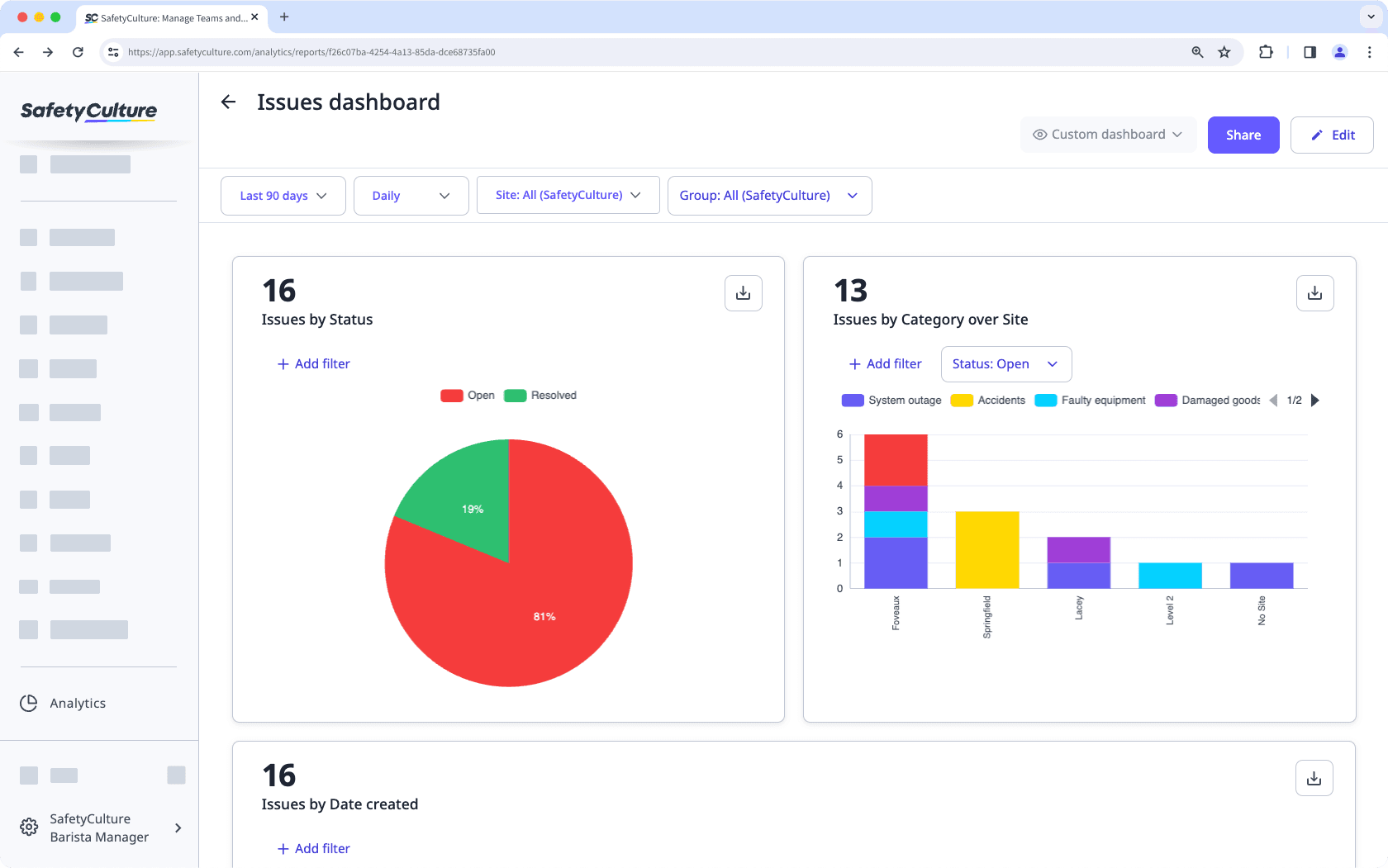- Using SafetyCulture
- Issues
- What are issues?
What are issues?
Learn more about issues to help your team identify, report, track, and collaborate to resolve issues together as they occur.What are issues?
The Issues feature includes a wide range of functionalities that empowers not only frontline workers to report issues as soon as one occurs, but also the teams responsible for resolving them, as they are notified immediately.
Each issue has its own audit trail, which logs comments, media attachments, as well as field updates in real-time. This means all parties involved in the issue can collaborate in one space to resolve the problem, and once resolved, all the details and activities can be generated in a web report to be shared with relevant stakeholders.
Issues in SafetyCulture
Issue management
Effectively manage incidents, observations, and hazards reported by your team within the new issue profile. Review the issue summary, access any attached media, and track activity logs for updates on each issue. Collaborate seamlessly by sharing public issue links with everyone, even those without SafetyCulture accounts, ensuring stakeholders stay informed with real-time progress updates until the issue is resolved.
Customizable views
Manage your issue list using customizable views to track and analyze each issue's status and details. Apply filters to quickly access relevant issues and download views to share with your team.
Issue categories and access
Issue categories help organize and prioritize reported issues within your team based on their classification. With issue categories, you can customize the content and recipients of your issue notifications, set Critical Alerts for high-priority issues, and link templates to issues to provide more detailed analyses.

In addition, manage incident reporting within specific issue categories by customizing the following settings:
Category visibility: Control who can report issues using specific categories turned on for select users, showing only those issue categories relevant to your organization.
Issue access: Manage access permissions at the category level to ensure selective issue reporting capabilities for users, groups, or site members.
QR codes
Issue QR codes simplify issue reporting through SafetyCulture without requiring individual user accounts. When scanned, these created issue QR codes prompt users to answer specific questions to provide comprehensive details about the reported issue.
Notifications and Critical Alerts
Customize your organization's issue email notifications to share sensitive information exclusively with authorized users or groups. Tailor the level of detail in these email notifications as Private (default), Summary, or Detailed according to your needs.
Additionally, you can set up Critical Alerts for each issue category ensuring that individuals receive notifications of severe incidents promptly, even if their mobile devices are muted or in Do Not Disturb mode.

Custom questions
Issue fields and custom questions help users understand what details to record when reporting an issue. You can manage pre-set issue fields by choosing to make a field visible and setting them as required.
Additionally, create custom questions to specify critical information for each issue. You can customize the response type and make questions mandatory as needed during issue reporting.
Link templates
When reporting an issue, users usually conduct inspections to initiate detailed analyses. Having readily available templates at this stage helps streamline the incident resolution process and accurately capture all relevant details.
Issue reports
Share an issue report with your team and stakeholders to view by generating a public link for real-time access or exporting it as a PDF document.

Analytics
The Analytics feature allows you to spot trends and monitor the progress of issues reported by your team. You can create dashboards, add charts, and apply filters to capture relevant information, such as the number of issues by status and category per site.

Was this page helpful?
Thank you for letting us know.